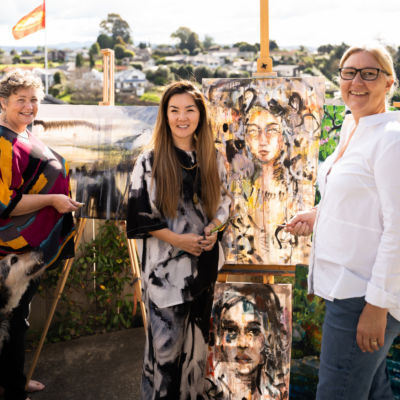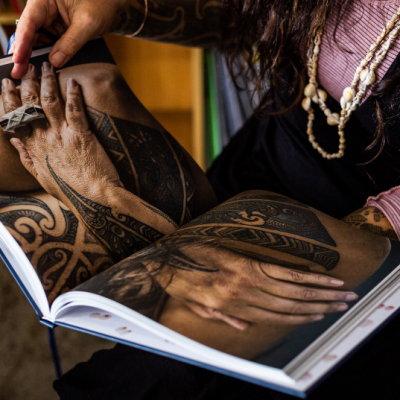Creative Patapatai
Ulemj Glamuzina, Shona Mackenzie, Cordula Taiwo, and Lou Agas are presenting an exhibition that reflects on the four seasons: winter, spring, summer, and autumn. Hailing from different parts of the globe, these four artists have each made Tauranga their home. Read on to discover their inspiration, the advice they have for other creatives, the places they’ve been, and their favourite parts of the Bay.
Four Seasons | Four Artists is showing from 12 September to 9 October at the Carlton Gallery, Katikati.
Your occupation, job title, artistic discipline (or very brief description of what you do):
Ulemj Glamuzina: I’m an artist who paints with acrylic and mixed media.
Shona Mackenzie: I am a process-driven, mixed media, semi-abstract, visual artist.
Cordula Taiwo: I am a secondary school teacher who paints in her free time.
Lou Agas: I have two hats. Most of the time, I’m a motion graphics designer and video editor. And during my free time, I am a visual artist doing paintings with acrylics.
What cities/towns have you lived in (or spent more than a few months in) beginning with the place of your birth?
UG: I have lived in Ulaanbaatar, Dublin, Leeds, Sapporo, Ottawa, Auckland, and moved to Tauranga most recently.
SM: I’ve been a bit of a rolling stone to be honest. Most of New Zealand’s main cities have been home at some point. I was lucky enough to spend a few years in the Solomon Islands during my early teens and then lived in the UK for a decade. Most of that time was spent in Scotland.
CT: Well, you asked: Schwalenberg (a tiny town with a castle on top of a hill in Germany), Hamburg, Munich, Fukui and Kyoto in Japan, Melbourne, Rotorua and Tauranga.
LA: I’m originally from Quezon City, Philippines. I was born, raised, studied, worked, and had a family there. Twelve years ago, we moved to Aotearoa New Zealand, residing here in Tauranga. I’ve never left as I’m loving it here.
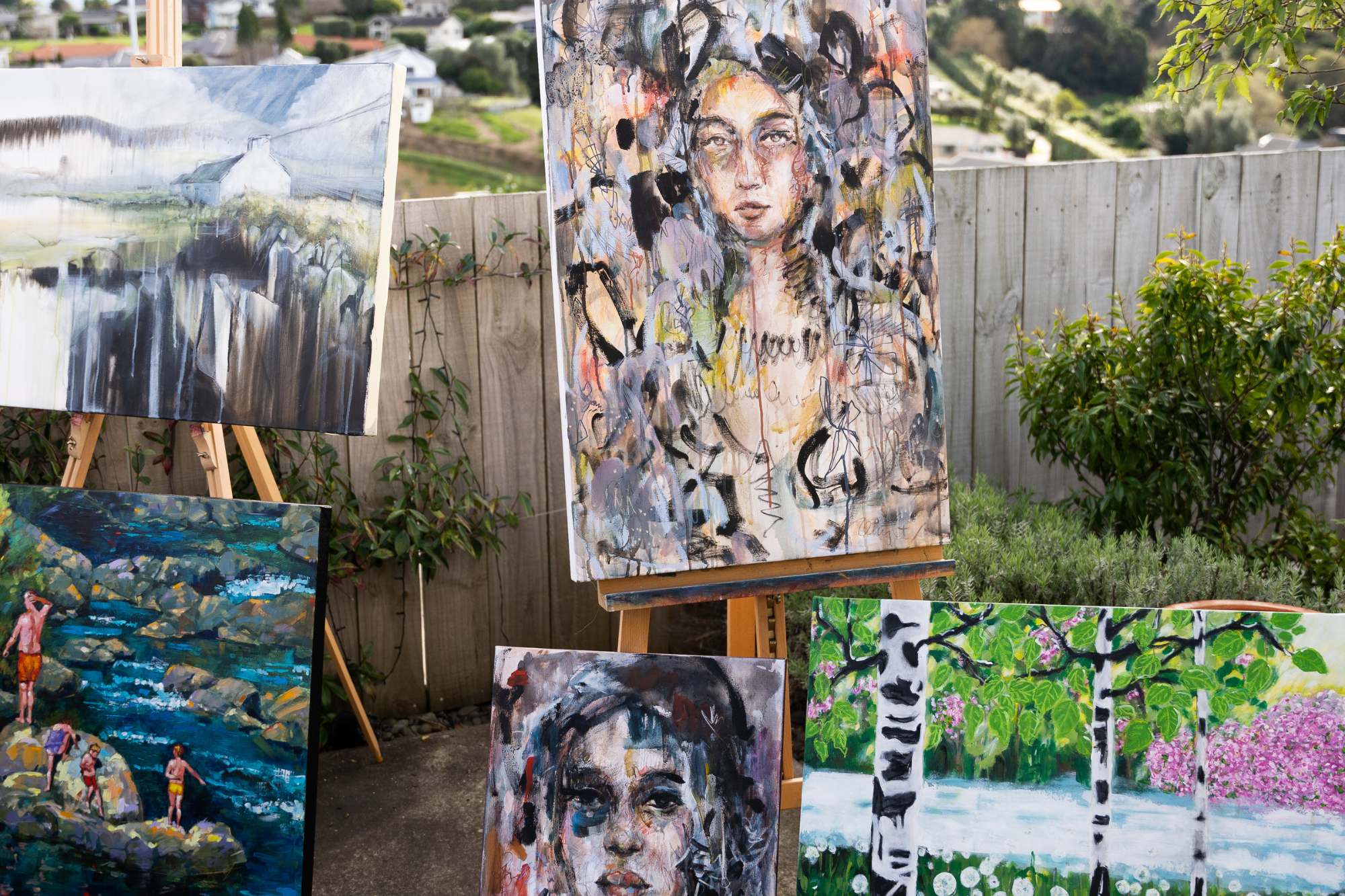
What are the earliest stories you remember hearing? The ones that told you about the world?
UG: My father used to tell me and my brother stories about Badarchin, wandering monks’ adventures, Sinbad the sailor, and some other fairytales from around the world.
SM: That would definitely be stories about Gigha, a tiny island off the west coast of Scotland, where my mother grew up and my family is from. Gigha was full of real characters. Whisky, music, laughter and storytelling all went hand in hand.
CT: My grandmother told me stories about life on their farm and the Second World War. My favourite story was about her being taken by gypsies. Her uncle, who was riding on horseback in the nearby forest, came across those travelling people, recognized the child and bravely claimed her as his family. He returned her unharmed to her parents. My grandmother had to tell that story over and over, and I often wouldn’t go to sleep until she did.
What’s your favourite Bay of Plenty landscape, park, building, location, suburb, or side street? Why?
UG: My favourite place is our home and garden in Tauranga. My husband and I built it, and planted a mini orchard. I have lots of great memories venturing down to Tauranga every second weekend just to plant some trees and drive back to Auckland.
SM: It has to be the Historic Village. I love the old buildings and the wee pockets of bush, but it’s all the amazing creative people that make it such a brilliant community to be part of.
LA: Mauao. It simply takes my breath away. It’s also one of my fave subjects to paint.
What’s an average day in your life at present?
UG: I like variety and enjoy challenging myself. I am a mum, I teach at Tauranga Girls’ College, I do some interpreting for few different government organisations, and I work on my art and clothing label called ZU which is being officially launched next month.
LA: I start my day with a light exercise routine. Breakfast, coffee, and errands after that. Start work around 10am. Probably painting if there’s not much animation work. Wind down around 5pm and start prepping for dinner. But working at home is quite flexible so it’s easy to juggle things. When deadlines are pressing, I can work until late at night or even in the wee hours of the morning.
What music was present and still memorable from your youth/adolescence?
CT: I was very lucky as my family exposed us to all kinds of music from umtata to classical music, rap to pop, soul and jazz; music was a big part of my childhood. Once every four years, my town would host an international music and dance festival and some of my happiest childhood memories are connected with those endless music filled midsummer days. I still listen and dance to all kinds of music and take a trip around the world on a weekly basis.
LA: I love everything 80s from my teenage years. KC and the Sunshine Band, The Gogo’s, Blondie, etc. Just shows how old I am.
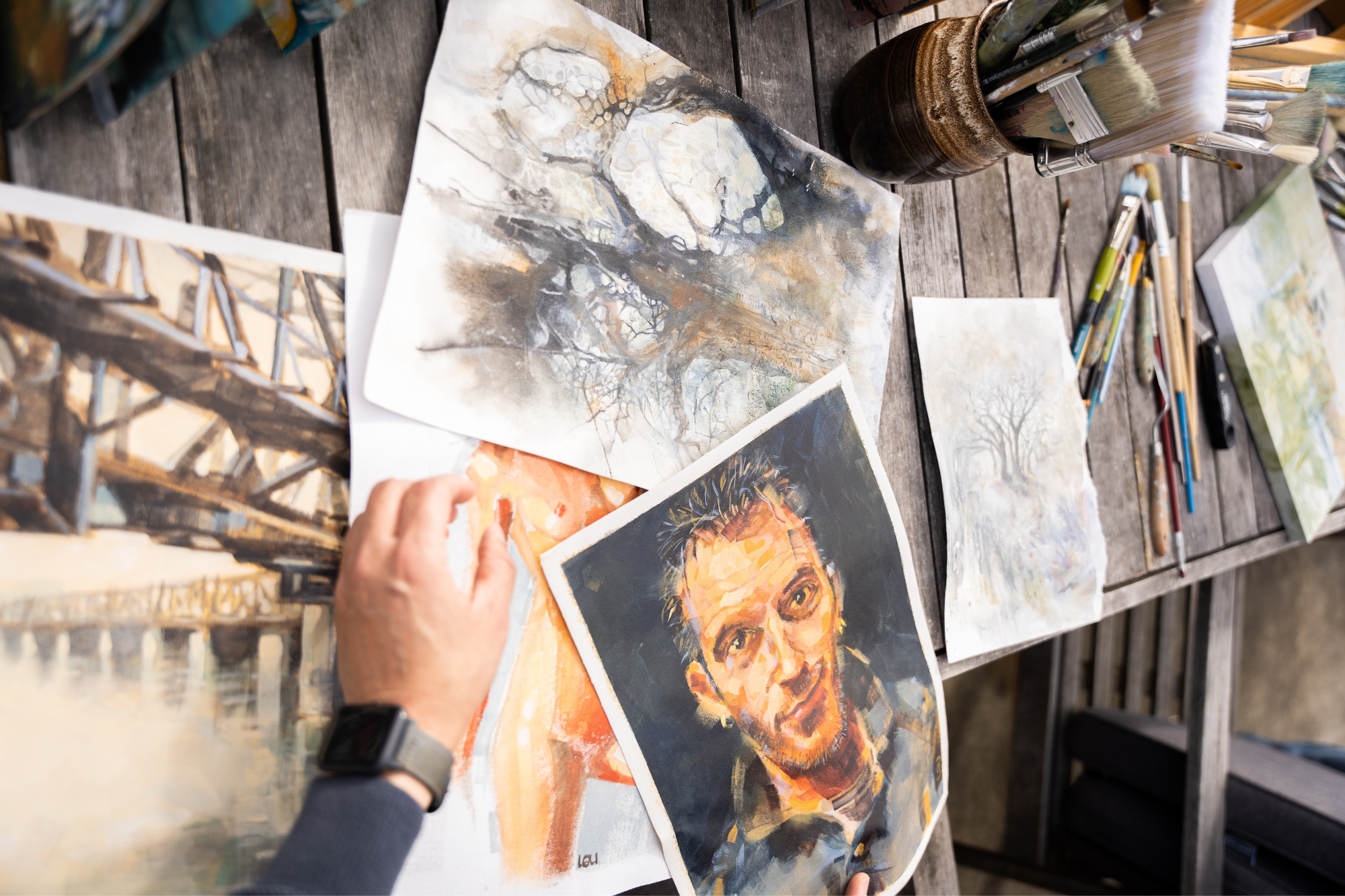
For you as a creative person, who are three influential artists or thinkers?
CT: My mother is the real artist in the family. She was told she was a dreamer and not academic enough for high school, so she found refuge in fashion and art. She became a fashion designer in Düsseldorf and was quite successful in her twenties before she had to sacrifice her career to start a family. She has instilled a love and appreciation of art in us from a young age even though we did not enjoy being around her when she got into her work groove as it was all consuming. She mellowed a lot over the years, and we can now work together on little art projects, which we both enjoy very much. She just turned 80 and is still heavily involved with the art world in my village. I love how that side of her does not seem to age at all.
LA: My forever inspiration since I was a kid: Vincent van Gogh. In some way, I still see his style in mine. Buckminster Fuller: there was a genuine intent to help people with his inventions and designs. Third is my brother, Pipo. He was a writer and poet. He died too early at 39 years old. He was content doing his own thing. He didn’t care about what others think of his writings.
If you went away from the Bay of Plenty for a long time and then came back, what are the first three things you would do or visit?
UG: My husband I used to come down from Auckland pretty frequently – like, every second weekend to see friends and walk along the Mount beach. One day we asked each other,why don’t we just move here? Mauao is very special for us so I would go up the Mount, get some real fruit ice cream for my husband and daughter and enjoy the walk along the beach.
SM: It would have to be catching up with family and friends, sharing mojito ciders on the deck of my tiny home, and watching the sun set over the Kaimai ranges.
CT: Oh! That just happened a week ago. I returned from a month in Europe and felt a little lost. I am one of those people who need to feel connected to feel real in a place. So, I took our dog for long walks wherever dogs are still welcome and focused on my work at school. I enjoy the company of teenagers; those kids have a way to ground you in the here and now. The next thing on the list is catching up with friends – where and how is secondary.
LA: Go up Mauao and soak up the view. Go to Fergusson park and soak up the view… of Mauao. And third, visit the Historic Village to meet up with friends; probably have coffee and a pie at the Whipped Baker, and talk and talk and talk.
Looking back at your teen-age self: what one sentence describes that person?
SM: A passionate, rebellious, adventurous dreamer.
CT: That teenager wanted to be a real human being.
LA: He’s 90% not that person today.
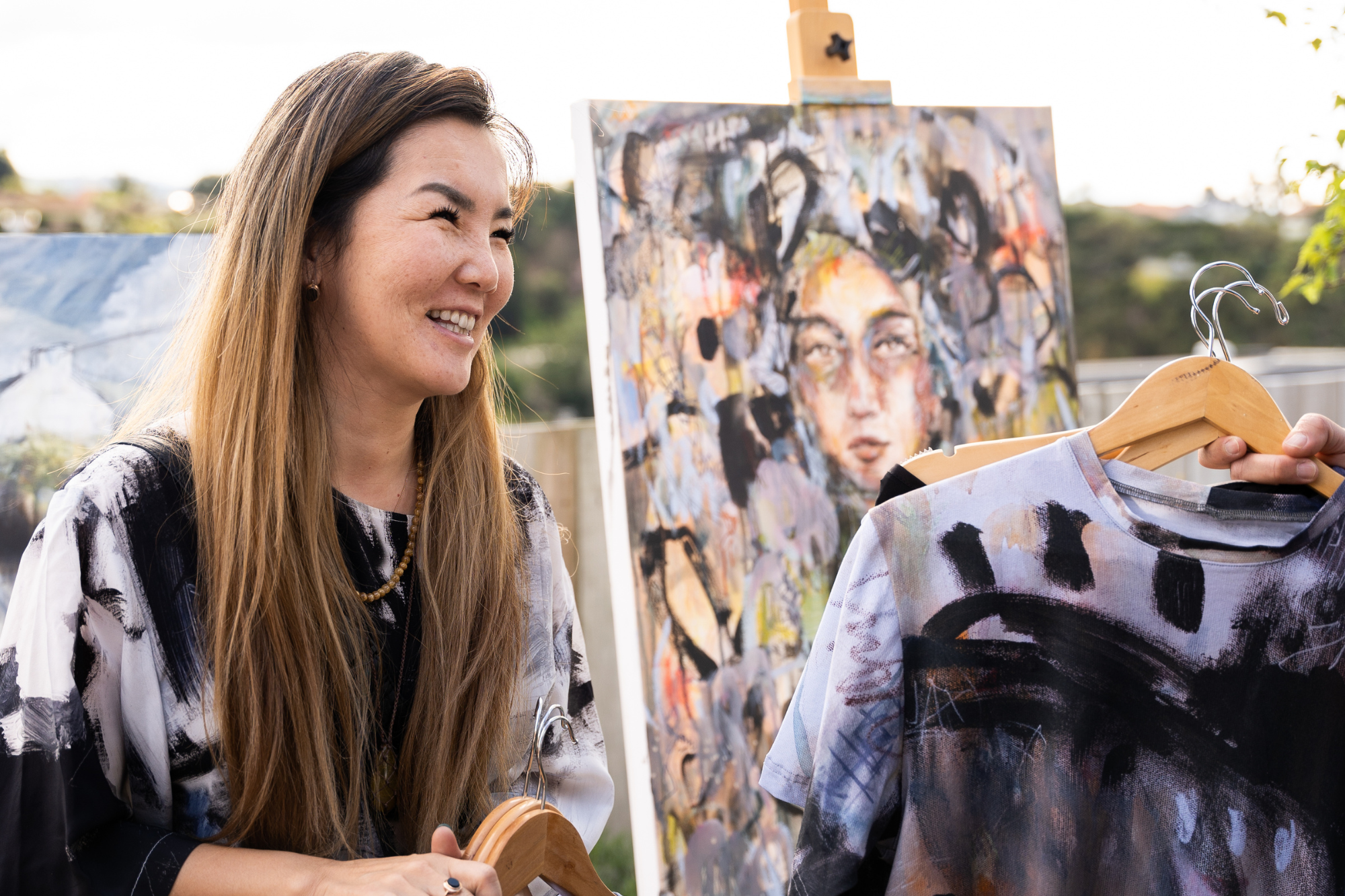
If you had to eat the same meal every day, what would it be?
UG: I could eat hot soup every day, even in the height of summer. I am a classic vata.
CT: That is not fair. This would have to be a very, very long international meal!
LA: Bottled spicy sardines in olive oil.
What are you planning for 2022/2023 that nobody knows about yet?
UG: Something big and exciting in store but I’m not ready to share it with anyone yet.
LA: Hoping I’ll be able to walk the Camino de Santiago late next year. But then again I’ve been saying that for four years now.
Who are your favourite or most admired figures from history?
CT: Those who no one knows about. Unsung heroes and forgotten dreamers who loved, worked, and lived wholeheartedly through the ups and downs of an uncaring history.
In one sentence, can you define art?
UG: Art for me is something that grants me freedom to explore.
SM: No pressure right?! I think art might just be the external manifestation of a creative soul seeking to make sense of its existence.
CT: Why would I want to do that?
LA: I don’t think I know how. Even with several sentences.
What is missing or lacking from your Bay of Plenty community or environment?
LA: More cheap street food.
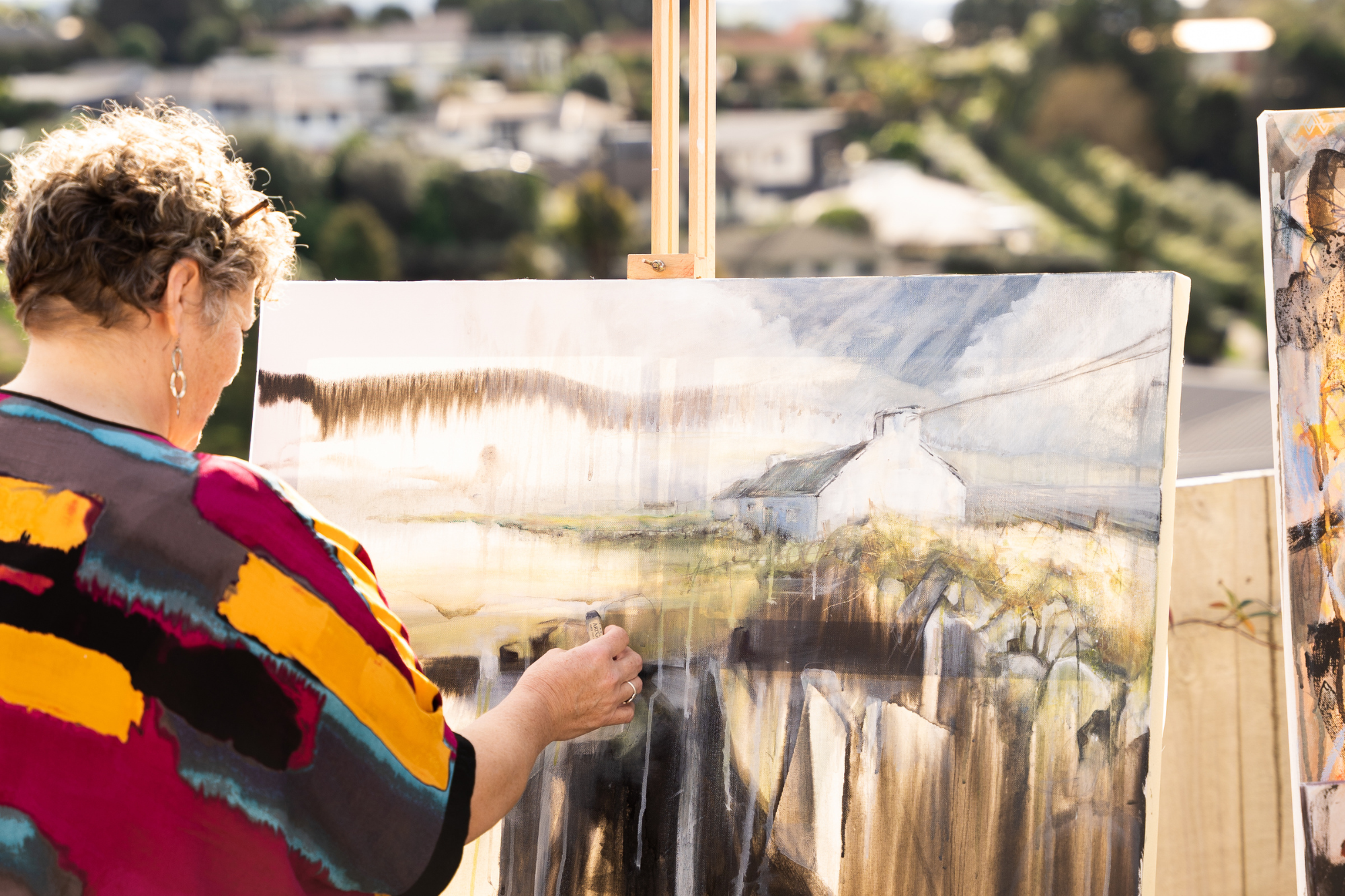
Name a few films that you consider profound, moving or extraordinary?
CT: Out of Africa, Shadowlands, Rio (the animated movie), In the Name of the Father, Shawshank Redemption, Wall-E, the Matrix, Amelie, The Grand Budapest Hotel, Selma, The Social Dilemma, and Don’t Look Up.
LA: Irreversible is one extraordinary rollercoaster and not for the faint of heart. I nearly barfed from the camera work. It’s so violent. But the message I got from all of that was somehow very spiritual.
What was your first real job, second, third?
UG: Soon after completing my undergraduate studies, I was offered a job to teach English, and during the summer months I would also take tourists through the Gobi desert. After that I worked as a translator and a journalist for an English newspaper for a few years, and moved onto working for one of the major banks in Mongolia.
LA: I started out as a production assistant for a film and advertising production company. Then I was trained as a digital artist and compositor for visual effects. I had a stint as a motion control camera guy and visual effects supervisor.
Where would you like to live, but have yet to?
SM: If I ever win the lottery, my plan is to buy back and live in the Old Mill (that my great-great-great-grandfather built and that has remained in the family until 2019) on Gigha. That would right a serious wrong, make the ancestors happy, and be the most inspiring studio. The irony of talking about winning the lottery in relation to my comment below about consumerism is not lost on me.
CT: In a beautiful, unpolluted and not overpopulated place where I do not have to work to make a living. Maybe beside a forest, lake, or ocean? Purposeful, like in a Zen monastery, but without dogmatic restrictions. Wait, I think I just described my kind of heaven.
What word of advice would you offer an aspiring creative person?
UG: To show up everyday and not be afraid of making mistakes.
SM: Just believe in yourself and follow your passion. If the urge to create is within you, it needs to be given the opportunity to grow.
LA: Nothing. I think we all go through what we have to go through. That’s the fun of it.

What’s the biggest problem about life in New Zealand? How you would solve it?
SM: It’s not just a Kiwi problem, but like the rest of the western world we are trapped in the consumerist cycle. Wouldn’t it be great if we could return to living for community and fulfillment, rather than status and things. Hmm, how to get there? I think our planet is already telling us a rethink is required.
What is your dream of happiness?
CT: To be with people I care about in a place of natural beauty and to do meaningful tasks that bring me joy.
LA: Happiness to me is always having purpose. Gosh, I’d be soooo bored without it.
Anything else you’d like to tell us about yourself/your organisation?
UG: I am currently studying Māori and Indigenous Art at Te Wānanga o Aotearoa. I am also launching my new website www.zucreativewear.com which will have an online shop in September. While I haven’t had a chance to do a solo show this year, I have been able to be a part of joint exhibitions in Wanaka, Auckland, Tauranga and Hamilton.
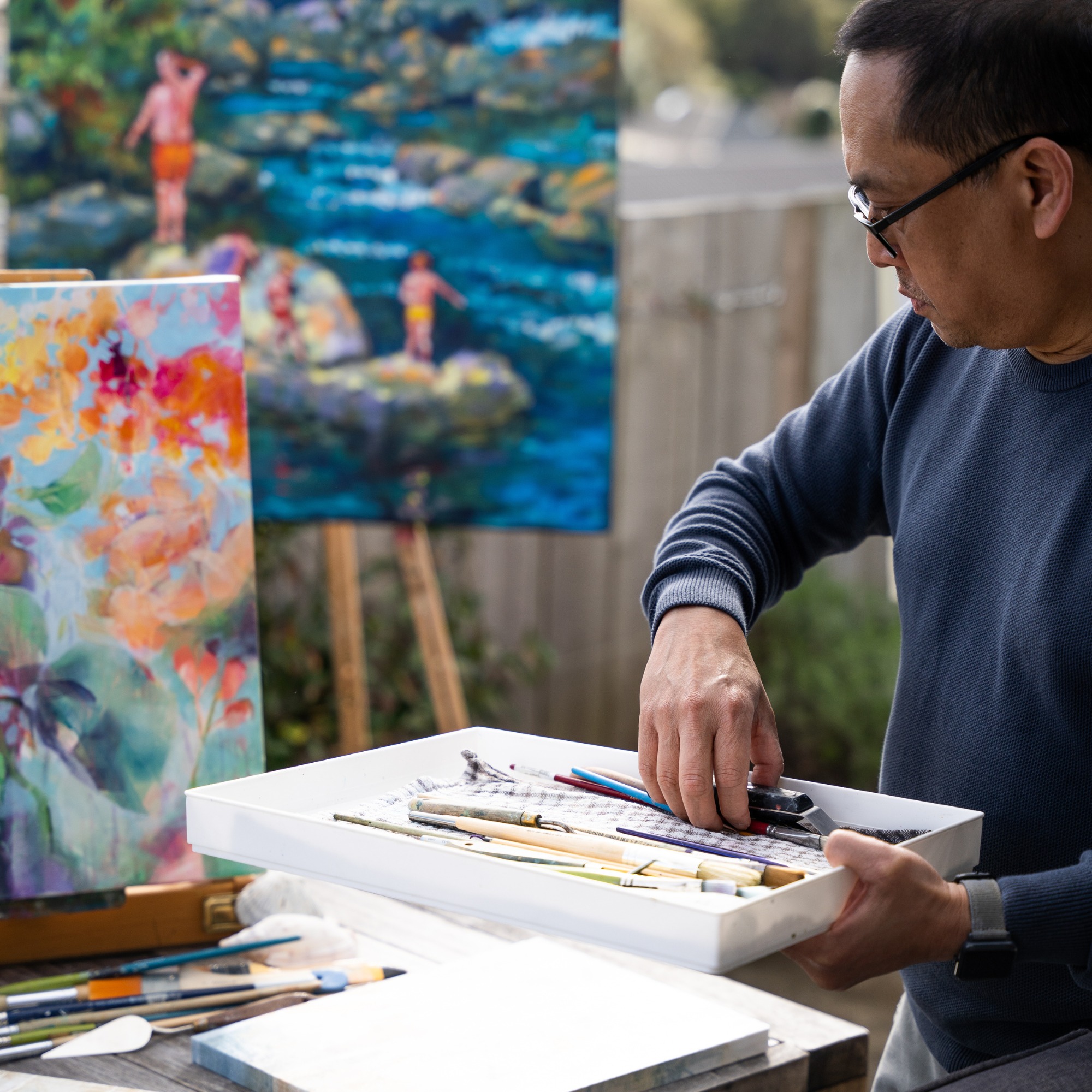
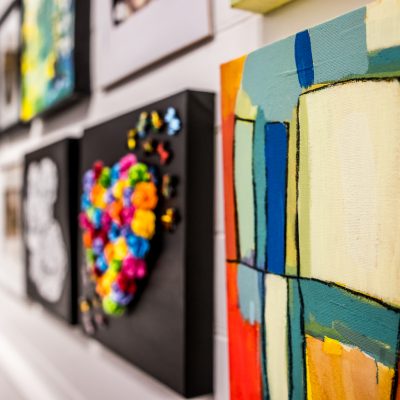
Creative Directory
Explore and connect with creative people, groups & spaces in Tauranga and Western BOP

